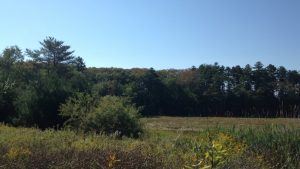In the most recent Yes! Magazine, climate scientist, Peter Kalmus, wrote about the grief that accompanies his work. As a scientist whose work it is to quantify the decline in our planet’s health and resiliency, Kalmus looks closely at the consequences that our choices impose on our planet. He describes being periodically overwhelmed by waves of climate grief.
In a millisecond, without warning, I’ll feel my throat clench, my eyes sting, and my stomach drop as though the earth below me is falling away. During these moments, I feel with excruciating clarity everything that we are losing — but also connection and love for those things.
While he has front row seats to observing climate change and the extraordinary responsibility of communicating what he knows to the rest of us, Kalmus is not alone in his deep awareness and grief. His article describes a rising “latent” climate anxiety and dread. In this time of instant transmission of news and information, we all learn of atrocities around the globe as they are happening. But climate disasters are not just headlines, they are eroding earth, engulfing fire and choking water. Likewise, humanitarian crises are not just policies, they are injured, separated or murdered children, parents, brothers, sisters, and friends.
There is cause for grief.
When it visits me, I give myself permission to sink into it. In that grief, I notice my despair, rage, and sorrow. I also notice my commitment to planetary health, safety, and love. I fall into cleansing tears, releasing the dismay, sorrow, and frustration that seem to simmer restlessly at the back of my mind. When they rise to the surface, they are demanding to be noticed and appreciated. Once I have held my grief close (for hours, days or weeks), I can begin to see its other side. A little glimmer of light emerges at the edges.
That light is hope — revitalized and ready for action. The hope that is born of grief is not distant or idle. It is not a far off image or a distant fantasy, it is a distinct possibility. Not only that, it is a possibility that I have the responsibility and privilege of bringing it into reality.
In Animal Dreams, Barbara Kingsolver offers gentle encouragement for our hard work and our hope:
You’re thinking of revolution as a great all-or-nothing. I think of it as one more morning in a muggy cotton field, checking the undersides of leaves to see what’s been there, figuring out what to do that won’t clear a path for worse problems next week. Right now that’s what I do. You ask why I am not afraid of loving and losing and that’s my answer. Wars and elections are both too big and too small to matter in the long run. The daily work — that goes on, it adds up. It goes into the ground, into children’s bellies and their bright eyes. Good things don’t get lost. I’ve decided: the very least you can do in your life is to figure out what you hope for. And the most you can do is live inside that hope. Not admire it from a distance but live right in it, under its roof.
August 1, 2018 was Earth Overshoot Day, the date when we (all of humanity) have used more from nature than our planet can renew in the entire year. That means that from now until December 31, we are on borrowed time. We (each one of us) have contributed to this overdraft. (Ok, not all of us. Find an analysis of countries with Biocapacity reserve or Biocapacity deficit here.) From whom or what are we borrowing?
We are borrowing and stealing resources, health, and safety from ourselves, each other, next generations, and other species…As potentially overwhelming as that sounds, the emphasis of Earth Overshoot Day is on our capacity to incrementally begin to move the date. Changing all of humanity sounds like a big job, but changing myself feels quite possible. If I focus on my personal contribution to “each one of us”, I remain hopeful that we will eventually shift “all of humanity” toward life in balance with one another and the planet.
The Global Footprint Network suggests that we focus our sustainability efforts in 4 major areas: food, cities, population and energy. With a little thought, I quickly identified three things I can do today to begin to reduce the impact of food and energy consumption in our home. The clothes will dry outside on the clothesline. Vegetables will crowd meat off the plate at dinner. When I go grocery shopping, I will pay attention to purchasing more food from my foodshed and less food that has been wrapped in plastic and shipped by planes, trains and automobiles. Later this week, I will ride my bike to the farm down the road to stock up on veggies. Lifestyle changes begin one day at a time. One engaged life at a time, we can move Earth Overshoot Day. I will live inside that hope.
I recently followed (in a distant, facebook sort of way) the travels of Kali Bird Isis. Kali was with the Grannies Respond caravan that travelled to TX to offer witness, love, and support to the refugees who arrive at our borders seeking safety and instead find themselves at risk once again. In videos and stories, Kali showed over and over how her grief and hope cataylzed change and motivated her positive action. Her actions inspire me and affirm that one engaged life leads to another engaged life and another and another…
The injustices that we inflict on the planet are mirrored by injustices we inflict on other human beings. The dangerous -isms and -phobias of our time are tied together: consumerism, capitalism, racism, sexism, xenophobia, homophobia… Start pulling at one of the strings and we find them all tied together. While that can make the knot look unsolvable, it may be just the opposite. When we begin to unravel one strand, they will all begin to unravel.
If there is a strand that enlivens or enrages you, begin there. Notice the grief or hope that gets fired up when you trade stories with neighbors, read the news, or encounter strangers on the street. Then, create space for your hope and grief to dance together. That is when you will be moved to compassionate action too. That is when, together, we will be creating positive change for our planet and all beings. And that is hope we can all live inside.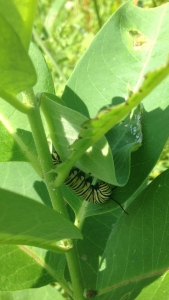

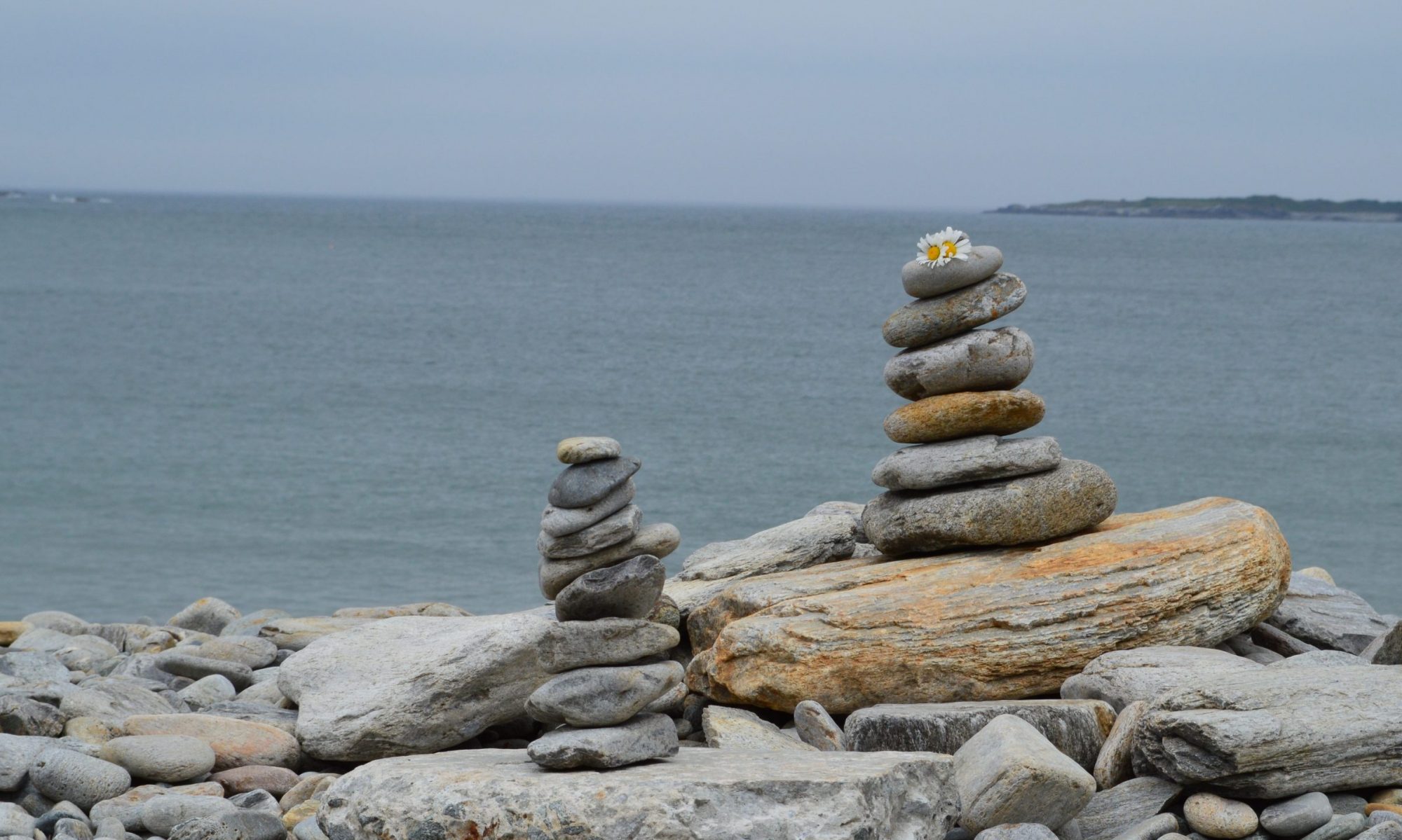

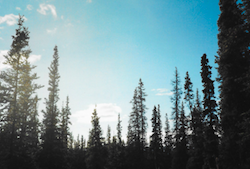
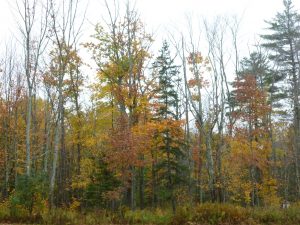 It has been windy. Most of the leaves have now fallen from the trees and remnants of the yellow and red flames of autumn are turning brown in the hollow spaces alongside the roads and fields. Ditches and culverts have filled with their excess and the rainwater must find new paths through and around the piles of decaying vegetation. Taking a walk early one afternoon, I felt the shift in the seasons settle into my bones and suggest a pause to my busy mind. The fecundity and fullness of spring and summer have given way to the barren openness of late fall. This is the time for hibernating, resting, waiting and attending.
It has been windy. Most of the leaves have now fallen from the trees and remnants of the yellow and red flames of autumn are turning brown in the hollow spaces alongside the roads and fields. Ditches and culverts have filled with their excess and the rainwater must find new paths through and around the piles of decaying vegetation. Taking a walk early one afternoon, I felt the shift in the seasons settle into my bones and suggest a pause to my busy mind. The fecundity and fullness of spring and summer have given way to the barren openness of late fall. This is the time for hibernating, resting, waiting and attending.
